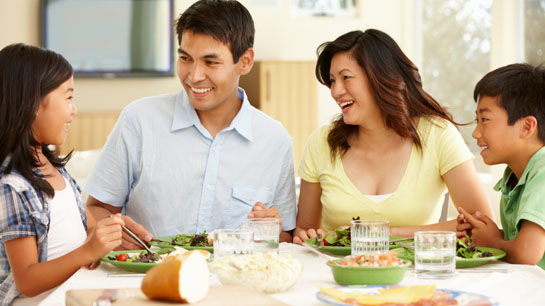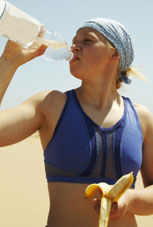
There are countless theories about why people prefer some foods over others or why we seem predisposed to crave high-sugar foods over healthier options like broccoli or kale. Some point to the food choices mothers make while pregnant, while others suggest that culture or even marketing play a stronger role. A new study, however, suggests that food preference among both children and adults may be strongly influenced by beverage choice. While water appears to encourage healthful choices, drinking soda or other high-sugar beverages like juice creates a preference for high-salt, high-calorie foods.
The study, which will appear in an upcoming issue of Appetite, examined the food and drink pairing preferences of 60 adults, ages 19 to 23, and 75 children, ages three to five years. The adult survey, not surprisingly, concluded that people drinking soda were more likely to choose foods like French fries and pizza over salads and vegetable dishes. For the children’s study, researchers noted that kids ate more vegetables when they were drinking water, while vegetable consumption dropped considerably when they were served juice or other sweetened beverages.
One of the best recommendations fitness professionals can make to their clients who want to lose weight or eat healthier is to always choose water over sweetened drinks, especially at mealtime.
In a note that parents in particular will find interesting, the researchers wrote that “vegetable consumption is not influenced by the child’s fussiness, but is influenced by the drink accompaniment.” In other words, perhaps those ubiquitous juice boxes have more to do with a child’s aversion to carrots than his or her taste buds or degree of stubbornness.
The results of the combined study indicate that water appears to increase preschoolers’ appetites for vegetables, while soda makes young adults avoid them. And, because food preferences appear to be imprinted early on, parents should encourage their kids to drink water with every meal. Likewise, perhaps one of the best recommendations fitness professionals can make to their clients who want to lose weight or eat healthier is to always choose water over sweetened drinks, especially at mealtime.
Source: Cornwell, T.B. and McAlister, A.R. (2012). Contingent choice: Exploring the relationship between sweetened beverages and vegetable consumption. Appetite, in press.
____________________________________________________________________
Bananas Outperform Sports Drinks

A new study by researchers at Appalachian State University's Human Performance Lab compared the performance benefits of sports drinks and bananas during a simulated road race lasting between two-and-a-half and three hours. Trained cyclists consumed either a cup of carbohydrate drink or half a banana every 15 minutes during the race, while researchers monitored their metabolites. Blood samples taken before and after the exercise session revealed that the bananas provided antioxidants not found in the sports drinks. Furthermore, while the cyclists performed equally well whether they were eating bananas or consuming a sports drink, the bananas provided additional nutritional benefits, including fiber, potassium and vitamin B6.
Dr. David C. Nieman, director of the lab and lead researcher on the study, believes the benefits of bananas hold true for any mode of exercise, not just cycling. Additionally, he says, “This type of research shows that you can have healthier carbohydrate sources before and after exercise that will support athletic performance just as well as a sports drink.”
Source: Nieman, D.C. et al. (2012). Bananas as an energy source during exercise: A metabolomics approach. PLoS ONE, 7, 5, e37479 DOI:10.1371/journal.pone.0037479.